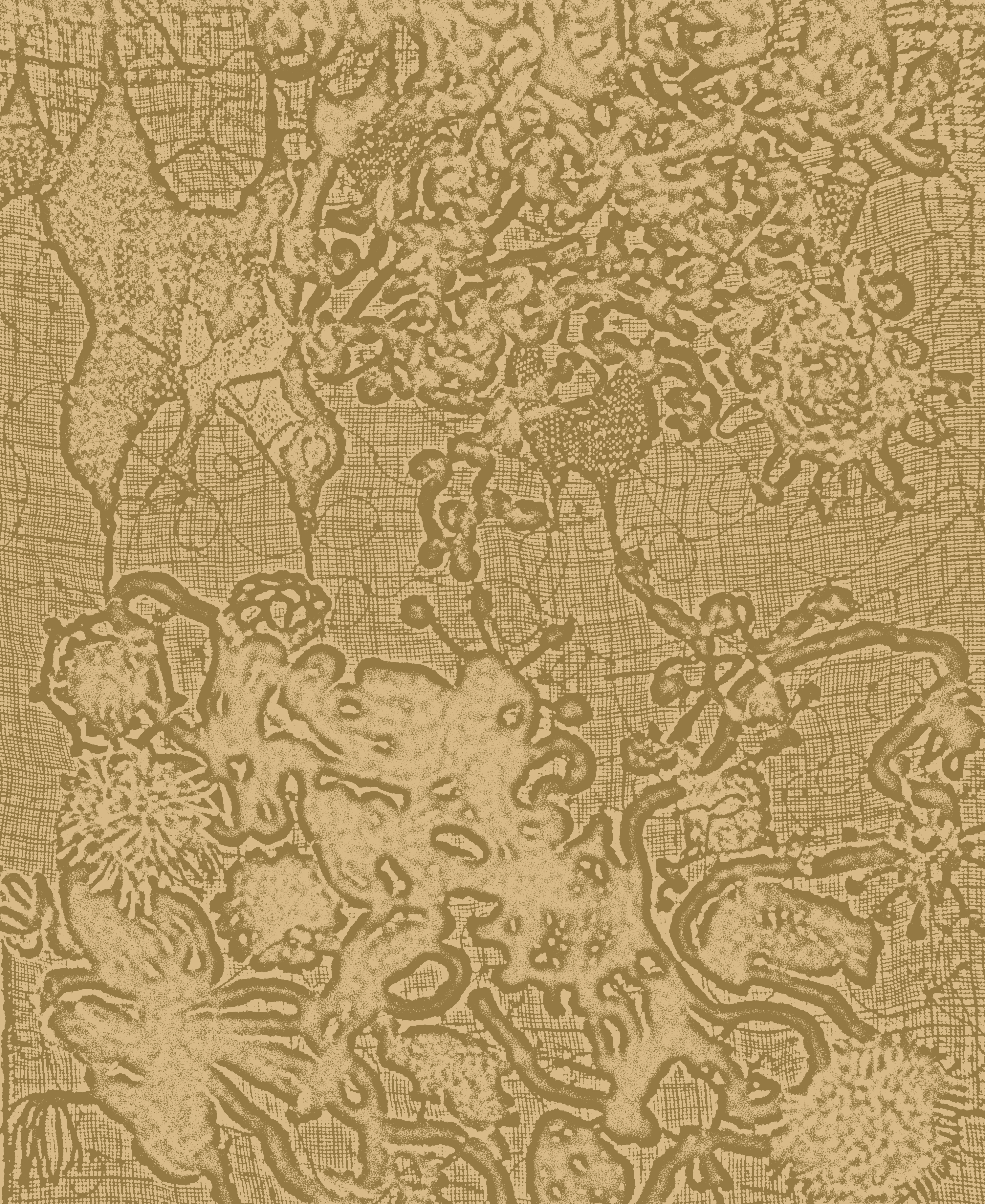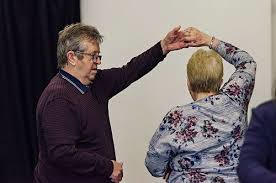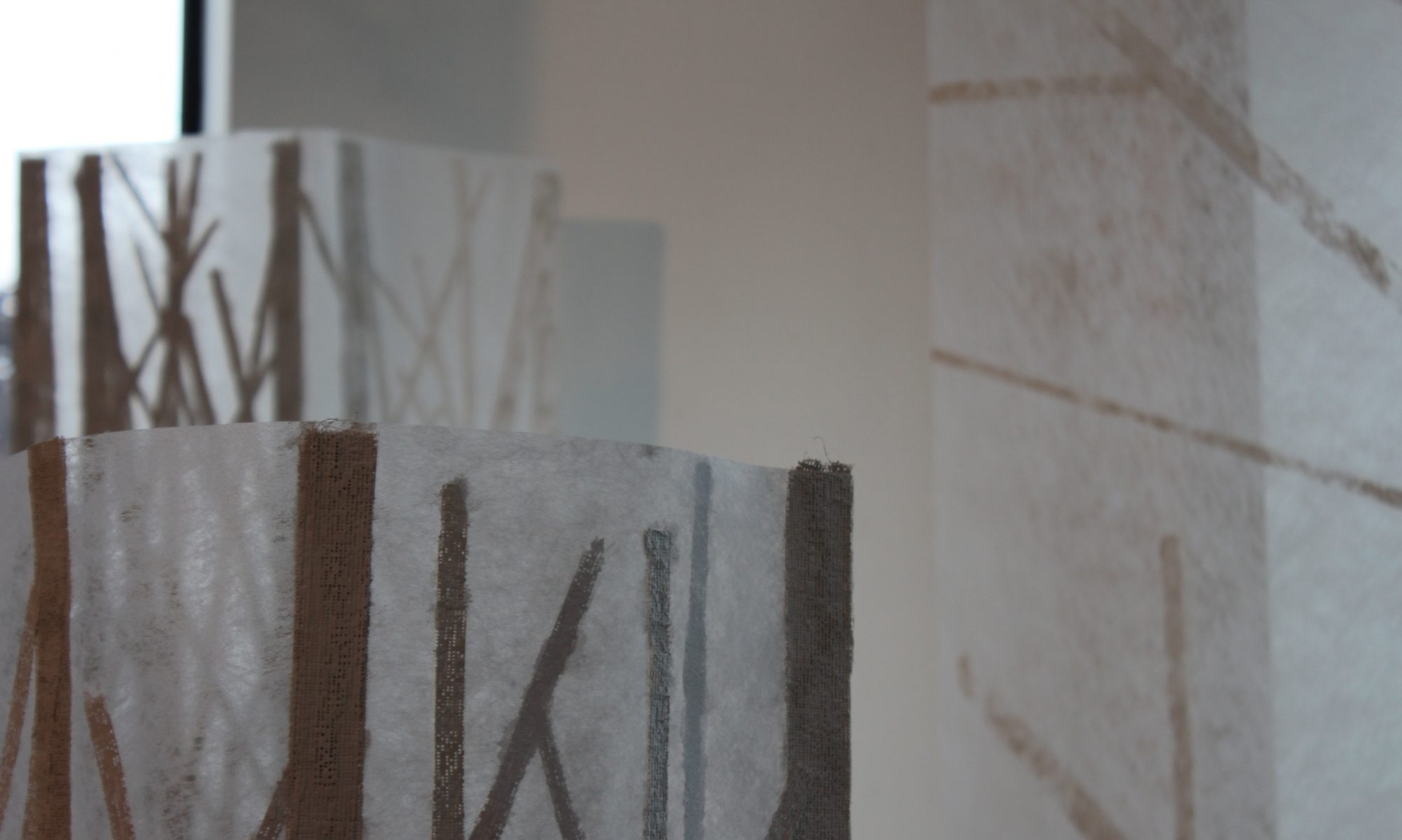
An idea emerged in the studio during the work we were doing around ‘the mind and body’ : perhaps we might exhibit in The Cumbria Infirmary. Some contact between college and ‘Arts in Health’ people at the hospital, it appeared, – all a bit vague really but quite exciting. I was interested in this potential liaison because my work at the time was exploring the dual brain theory relating to mental well-being and gut bacteria.
The hospital person might come in to college ……..
As time passed, it seemed that this liaison was just that – an idea! But, the hospital person did send us details about ‘The First Cumbria Arts In Health Conversation’ that would take place in January 2019.
I got a ticket.

The ‘hospital person’ is called Susie ( http://susietate.co.uk/) and I hooked up with her at the conference. She led a presentation that brought the delegate audience to tears with the ‘Live work’ on stage demonstrating the work of ‘About Being’ https://www.applied.co.uk/proud-supporting-unique-dance-project-stroke-survivors/
All in all, a fascinating day.

A summary of the day’s take-away points (for the purposes of FMP) were
* Visual art/artists were under-represented in terms of the presentations and workshops – this makes me wonder about the role of visual art/artists in ‘Arts in Health’ …. more on these thoughts later.
* A stand out moment for me was when …. amidst all of the presentations having been about art as ‘distraction’ …… one delegate- a photographer – mentioned in ‘Roundtable discussions’, that for him, arts practice in health actually involved ‘stillness, quiet, …… just that moment of being able to stand beneath a tree’. This, in contrast to all the ‘active and noisy stuff’ about drama, singing, dancing, talking etc from the musicians & performing artists, resonated deeply with me.
* Gardens of remembrance and for well-being were also discussed in our ‘Roundtable’ and the benefits to people of engaging with nature and landscape – these too having a powerful influence on me.
The context of much of the day’s discussion was ‘social prescribing’ (under the NHS plan). It makes me quite curious to understand how things like effectiveness and value for money can be measured for ‘socially prescribed’ arts activities. How do prescribers (GPs for example) know what to offer? Even more puzzling is how this works in ‘preventative prescribing’ I am keen to learn more about these issues and, particularly, what research looks like in this area.
Reading:
https://www.artsprofessional.co.uk/search/site/arts%20in%20health
A range of articles describing various funding models and evaluation practices.
“The inadequate research methodologies often used and the absence of a theoretical framework setting out ways in which it is believed that arts and culture create added societal value are undermining measurement of the impact of arts programmes.”
https://www.artsprofessional.co.uk/news/arts-impact-cannot-be-proven-say-researchers
can be contrasted with…
Aesop research.
https://www.artsprofessional.co.uk/news/research-identifies-active-ingredients-arts-and-health-interventions
An edifying article describing the range of different commissioning models for Arts In Health.
https://www.artsprofessional.co.uk/magazine/article/models-practice-arts-and-commissioning